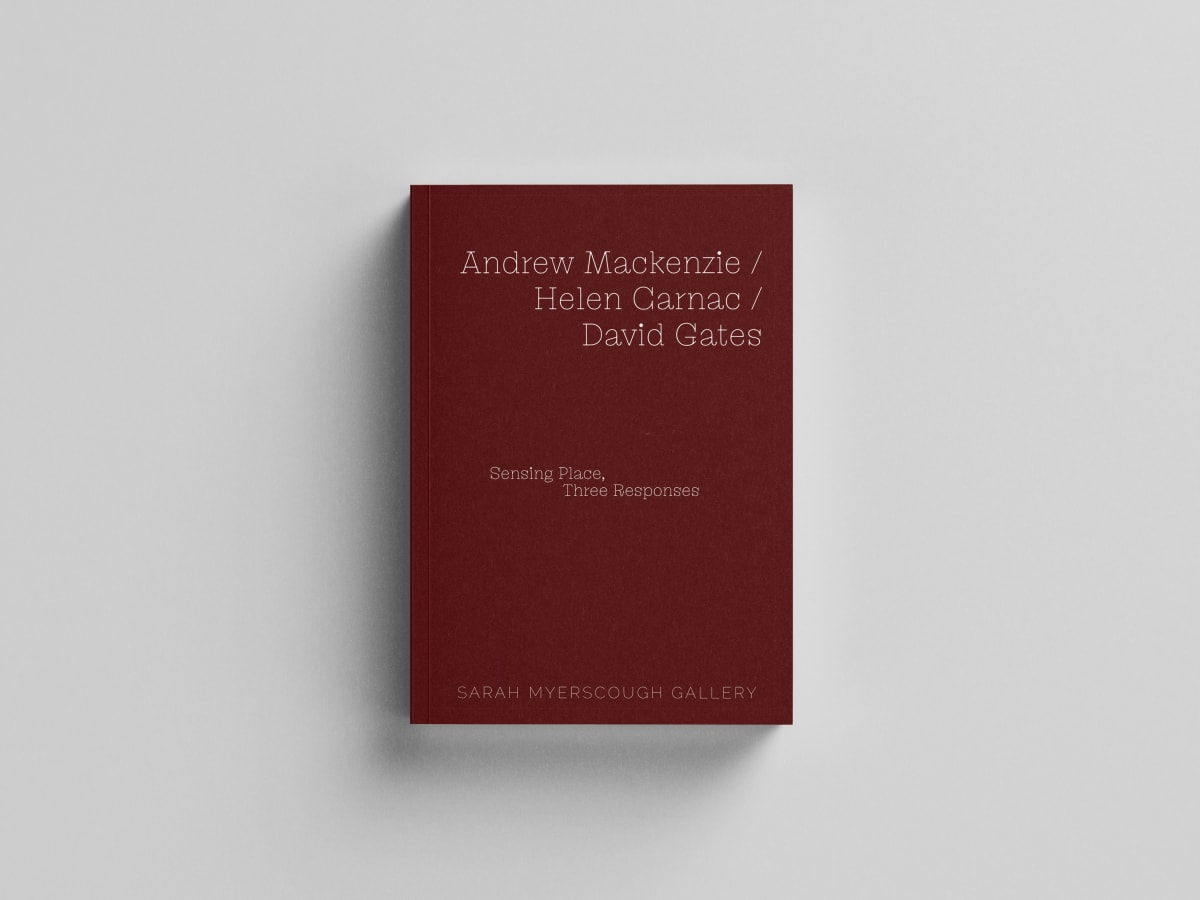The works are interrogatory; they point to usages and histories, references of implied culture, industry and the anthropogenic ‘natural’, with these meanings lurking just out of view. We wonder ‘for what’ ‘where from’ ‘why and how.’ What is Gates’ work supposed to hold or do in his implied world? His work is a clearly purposeful yet intriguing set of choices, his forms draw from a collage of farming tools, industrial shipping, factory machinery and anachronistic carpentry. Carnac’s work asks similar questions - as our eyes move over Carnac’s objects - are we thinking of the buckled corrugations of a dilapidated shed or the tilled undulations of the surrounding fields? Mackenzie’s work, though an interweaving of scenes of current Scotland, seems to point backwards and forwards in time - the old-growth forest entangled with the quarry, industry, human activity- and remains shrouded in the mystery of both, leaving us searching for answers the moments captured can only hint at.
Installation Views
Overview
The joint exhibition of Andrew Mackenzie, Helen Carnac and David Gates entitled Sensing Place, Three Responses is open from the 24th of February to the 15th of April 2023.
The show brings together David Gates' architectural interrogations of the furniture object, Helen Carnac’s ostensibly fragile constructions of vitreous enamel fused to copper and Andrew Mackenzie’s haunting landscape paintings capturing the entanglements of the anthropocene in the Scottish wild. Each through their divergent practice express their preoccupations with place, perspectives, planes of construction; in making and viewing, human and organic. Each problematise and play with these interlocking ways of seeing and being. The work collectively is; as Robert Macfarlane wrote in an earlier catalogue on Mackenzie’s work, essentially the ‘between’.
Carnac’s work in this collection is placed on and in, her vessels hold and are held, on furniture that is art object, stage and shelf. Her work can be seen as part of and through the peepholes in Gates's constructions of miniaturised collaged and imagined industries. The shifting planes of Mackenzie's paintings , where we see his shadow-trees, human-constructed barriers and painterly demarcations of space harmonising, echo the urge to understand the exhibition's three dimensional pieces from many perspectives and to make sense of the throughs, betweens, insides and underneaths.
The works hold many layers of tension; of construction, colour, material value and use. The group curation also serves to embody such subversions of expectation. While it is a gathering of landscape painting, crafted sculpture and carpentry object design; the representational vistas are laced with almost neon interruptions, the furniture is so much an amalgamation of industry construction as to be only incidentally functional and the crumpled metal vessels look to be folded by the wind. Yet these objects chime together, an encouragement to appreciate the prepositional state of ‘in between.’
Read the exhibition essay Making Sense of Place, Three Responses by Dr Iain Biggs RWA Independent lecturer / artist / researcher
Publications
Press








